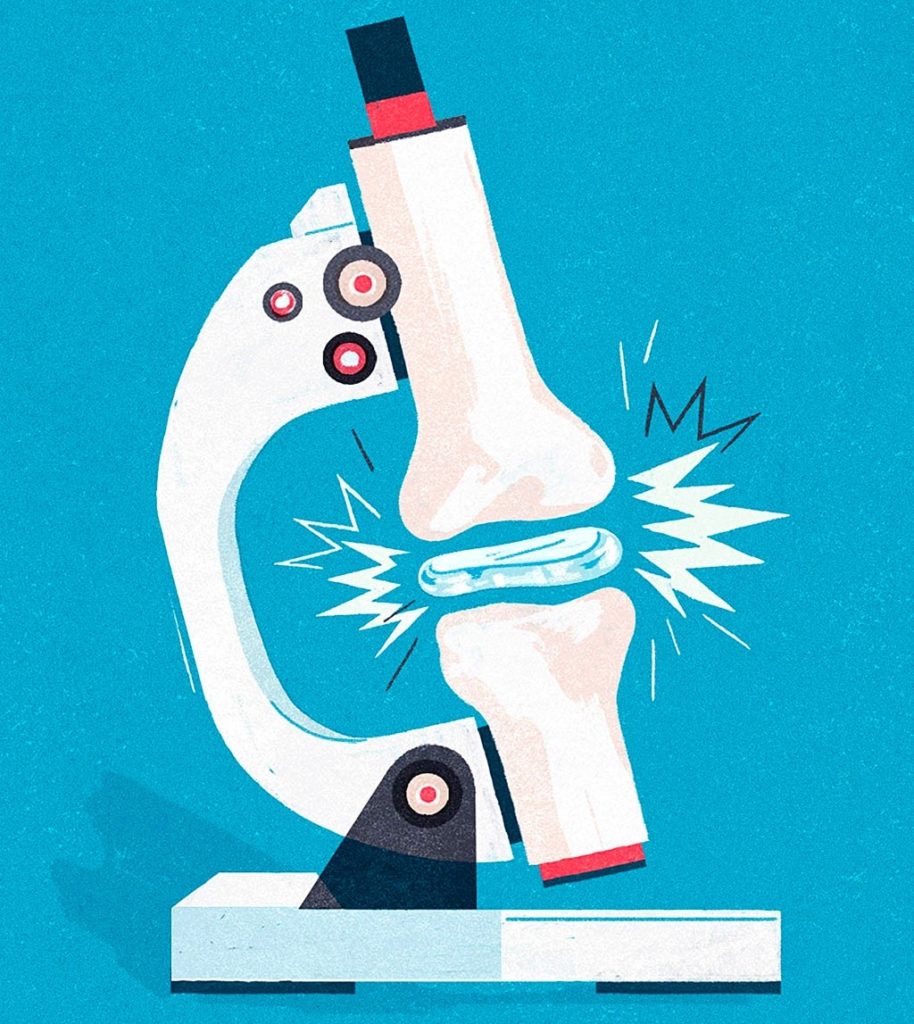Coaxing cartilage growth
Keeping joint movement pain-free

Stanford Medicine researchers have found a way, in mice and human tissue, to regenerate the protective substance that covers the ends of bones at the joints and keeps movement pain-free.
Loss of this slippery and shock-absorbing tissue layer, called articular cartilage, causes joint pain and arthritis, which afflicts more than 55 million Americans.
The method, described in a paper published Aug. 17 in Nature Medicine, starts with surgery to cause slight injury to the joint tissue and then uses chemical signals to steer the growth of skeletal stem cells as the injuries heal.
The work builds on previous stem cell research in the Stanford labs of assistant professor of surgery Charles K.F. Chan, PhD, and professor of surgery Michael Longaker, MD, co-senior authors of the paper.
“Cartilage has practically zero regenerative potential in adulthood, so once it’s injured or gone, what we can do for patients has been very limited,” Chan said. “It’s extremely gratifying to find a way to help the body regrow this important tissue.”
Next, researchers plan to conduct experiments in larger animals before starting human clinical trials.
“One idea is to follow a ‘Jiffy Lube’ model of cartilage replenishment,” Longaker said. “You don’t wait for damage to accumulate — you go in periodically and use this technique to boost your articular cartilage before you have a problem.”
